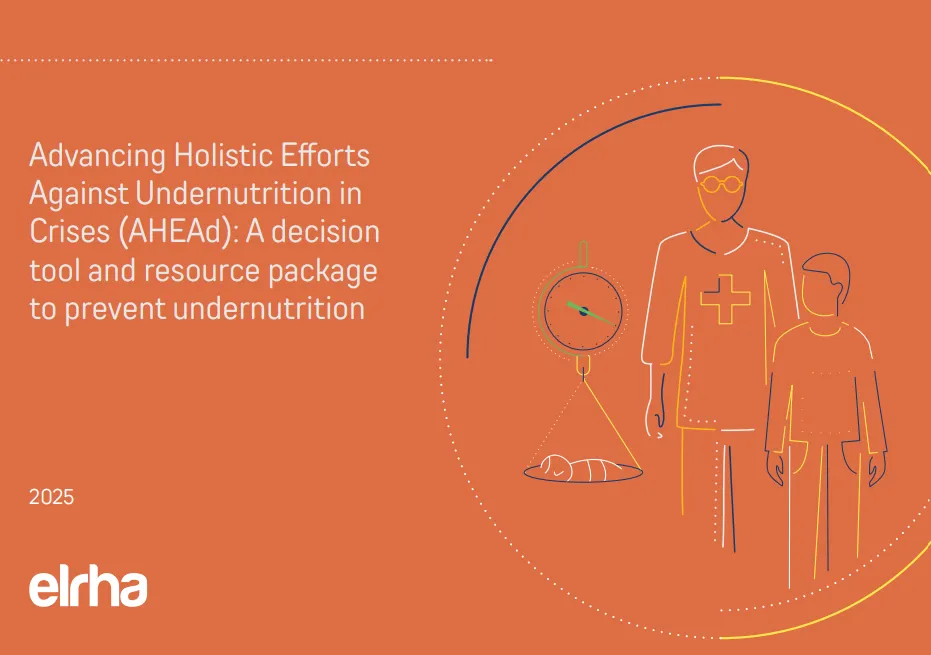Advancing Holistic Efforts Against Undernutrition in Crises (AHEAd): A decision tool and resource package to prevent undernutrition

Advancing Holistic Efforts Against Undernutrition in Crises (AHEAd) is a practical decision-making tool and resource package designed to support the prevention of undernutrition in humanitarian and food-insecure settings. Developed by NutritionWorks and funded by Elrha’s Research for Health in Humanitarian Crises (R2HC) programme, the tool helps actors to design and deliver effective responses.
The objective of this decision tool and resource package is to support governments, donors and coordinating and implementing agencies working in food insecure humanitarian contexts to design and deliver a response that will support the effective prevention of undernutrition among pregnant and breastfeeding women and adolescent girls (PBWGs) and children under five years. It aims to support the design of a complete multisectoral response, delivered by multiple actors, to address the most common and immediate drivers of undernutrition across diverse humanitarian settings.
This tool has been conceptualised and designed with a range of users in mind. Different sections of the guide will therefore be more relevant to some stakeholders than to others.
Actors concerned with governance, financing and coordination of the overall response (such as SUN focal points, national nutrition response coordination bodies, cluster coordinators and donors) may find the following sections particularly useful:
- Rationale for a multisectoral approach to preventing undernutrition.
- Contexts and target populations.
- Oversight, coordination and collaboration of a multisectoral response.
- Contextual analysis.
- Response design options.
- Principles and ways of working for prevention.
Actors concerned principally with the design and delivery of preventive interventions in specific sectors or a combination of sectors (such as government sector ministries, UN agencies, NGOs and civil society organisations) may find the following most useful:
- Contexts and target populations.
- All sections under the decision tool, including understanding causes of undernutrition, response design options, and considerations for monitoring and evaluation.
- Principles and ways of working for prevention.
These overarching sections may also support sector actors in guiding the design of their specific component of the response and help them think through how it will align or converge with other relevant components.
The tool is grounded in evidence and aligned with global guidance. It includes technical resources, case studies, and practical considerations such as gender equality, local leadership, sustainability, and the convergence of actions. It is designed to be flexible and adaptable to a range of humanitarian contexts.